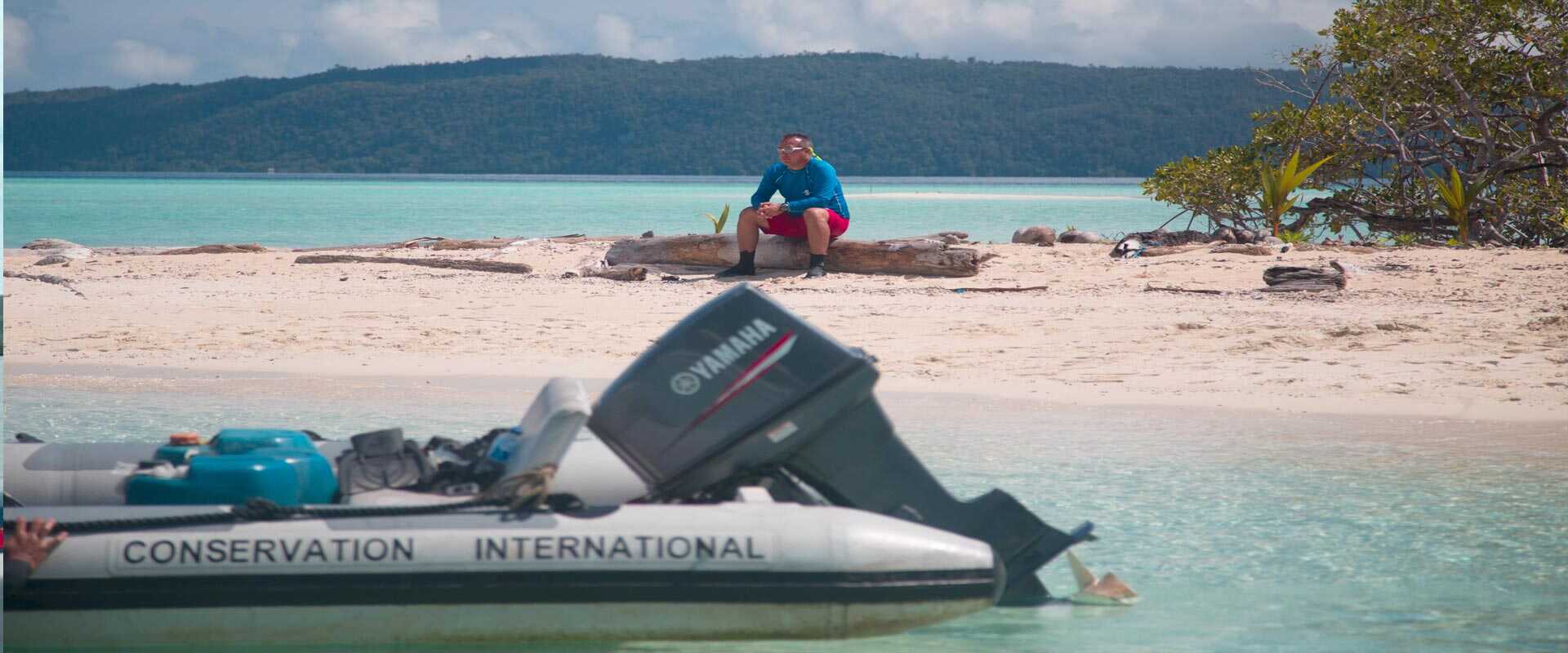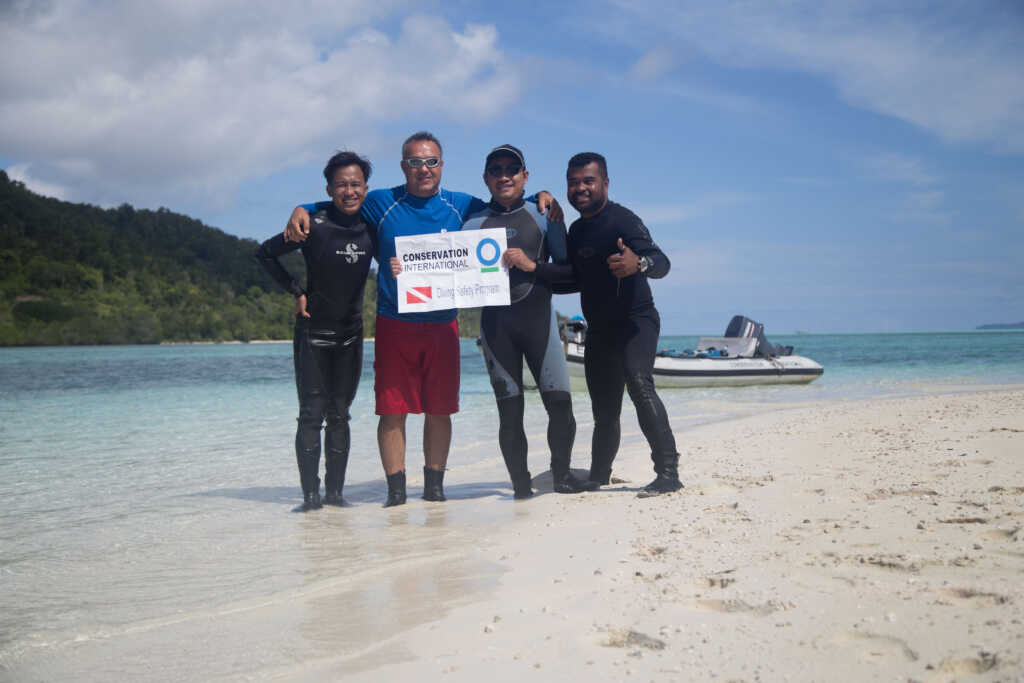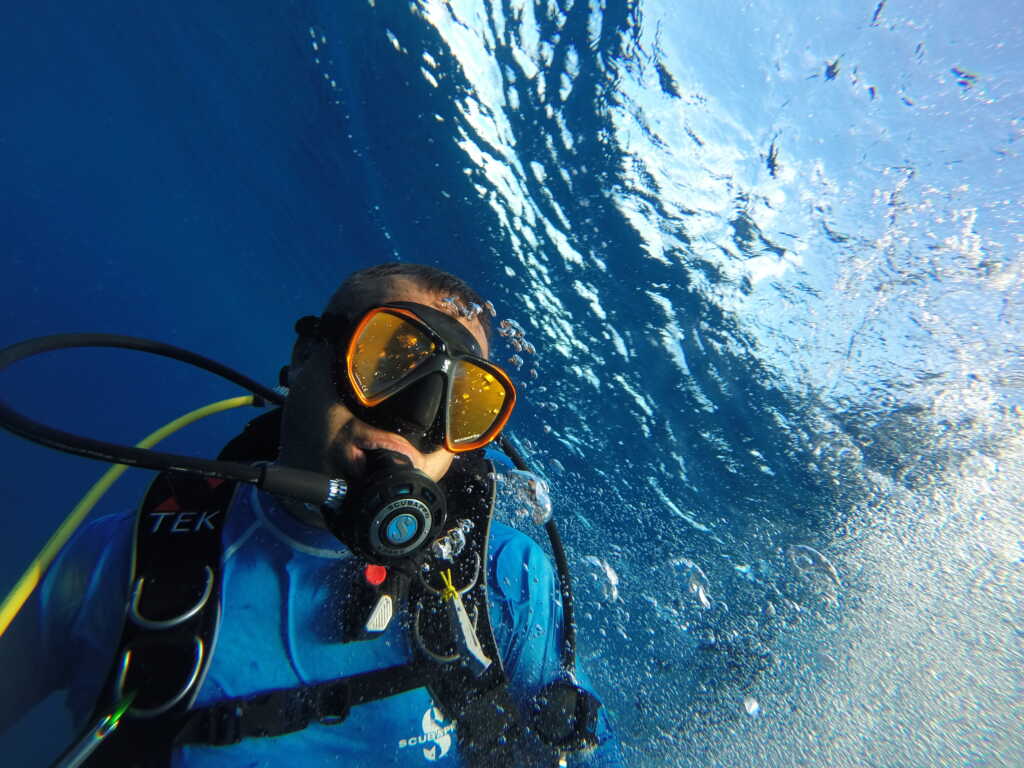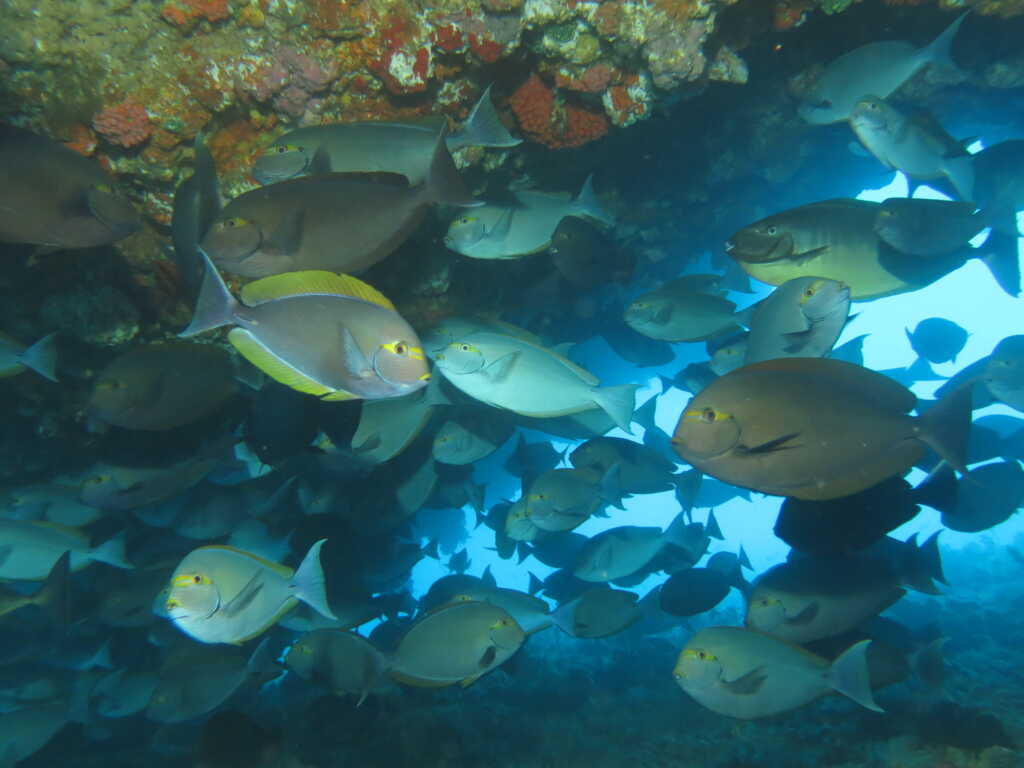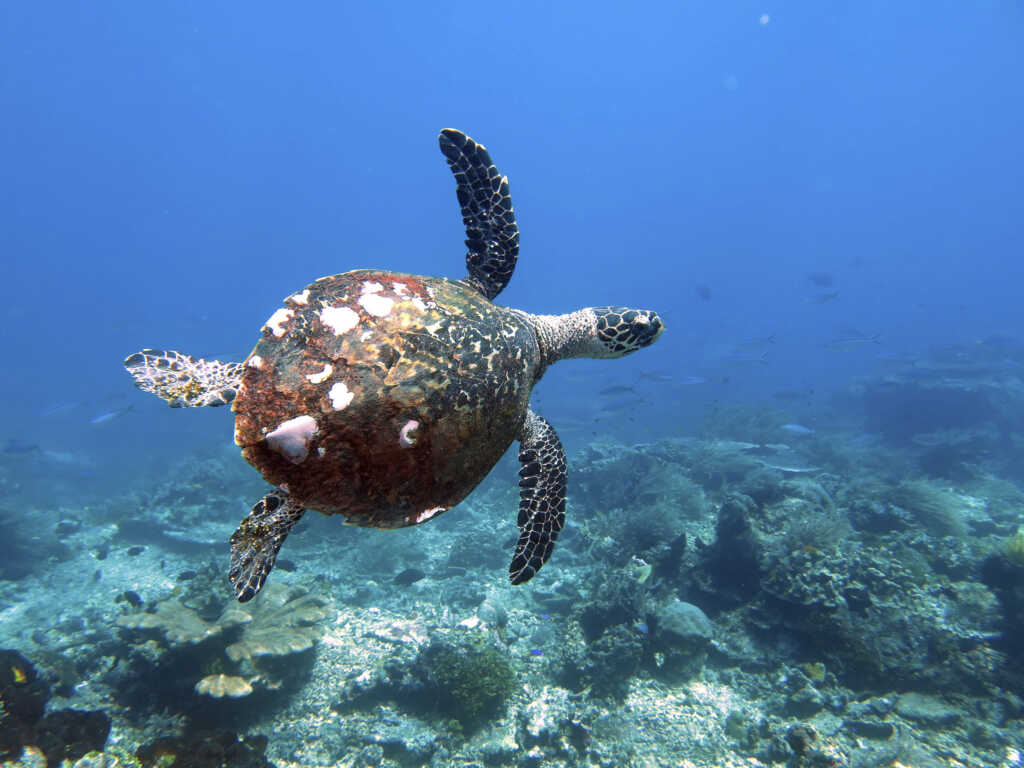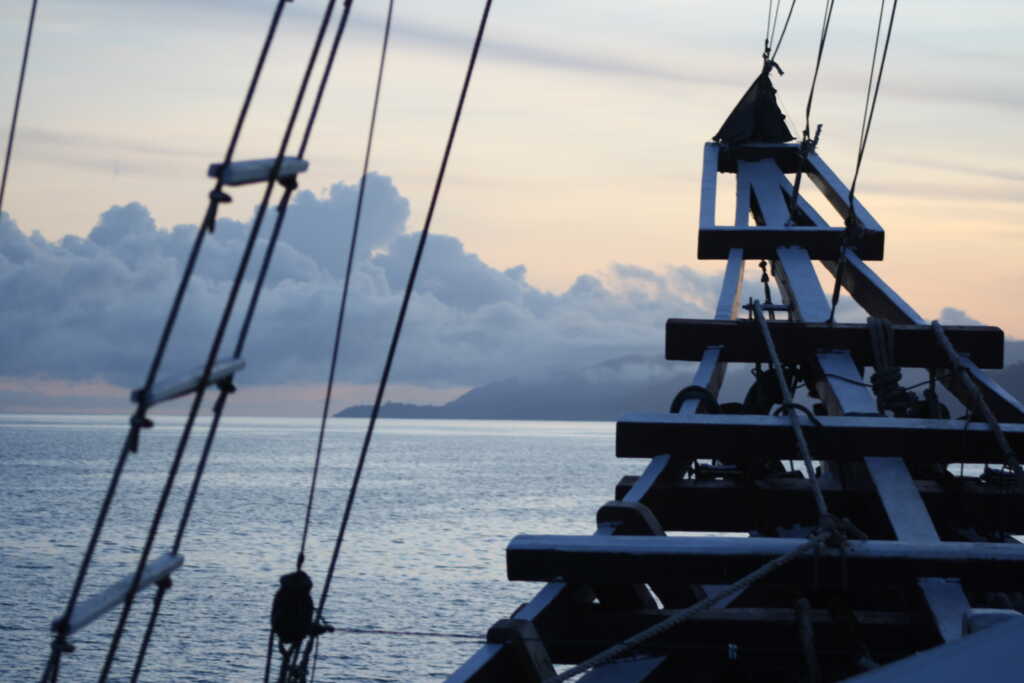“My job is better than yours: my experience in Raja Ampat” by Edgardo Ochoa
Only a handful of people get to spend their workdays scuba diving in the most beautiful waters on the planet. As a Diving Safety Officer of Conservation International my responsibilities are more than just diving, I am responsible for assuring safe conditions for our Global Dive Team. Other than dive and safety training, I provide information related to safety, new developments and trends in the diving industry. I also frequently am involved in public speaking where I share our mission on Marine Conservation. Additionally, I act as a dive coordinator on research expeditions to remote and unexplored areas around the globe. This aspect of my job is very rewarding and exciting, and I have been to some of the most amazing diving destinations.
Raja Ampat deserves a special place in my dive log. I visited for the first time in 2014; and since, I have become a frequent visitor of the Four Kings. Beginning with my first immersion in this amazing place, I immediately realized I was entering, quoting my colleague Laurie Katz, “the epicenter of the epicenter of the epicenter of marine biodiversity”; what an amazing place! As a marine biologist you can cross everything off your bucket list in a day of diving: whale sharks, pigmy seahorses, mantas, sharks, tropical fish in a plethora of colors and shapes, vibrant and healthy reefs, and stunning mangroves.
The Bird’s Head Seascape is home to more species of fish than the entire Great Barrier Reef and more species of coral than the Caribbean Sea, way more!
Raja Ampat is the Jewel in the Crown for divers, however this beauty and desire comes with a price. In the last few years I have witnessed the increase of liveaboards and dive operations even in remote corners of the archipelago, which contains a network of 12 Marine Protected Areas (MPAs) implemented throughout Raja and a total of 21 in the Bird’s Head Seascape, including Cenderawasih Bay National Park and the Kaimana (Triton Bay) Region.
The Indonesian government and organizations like Conservation International are working together to establish a legal framework, governance, conservation, development, support, long-term sustainability, and well-being benefits for all. Involvement of local communities with strong social and cultural ties to this place as well as passion for conservation is proof that it is not too late to protect our seas.





































